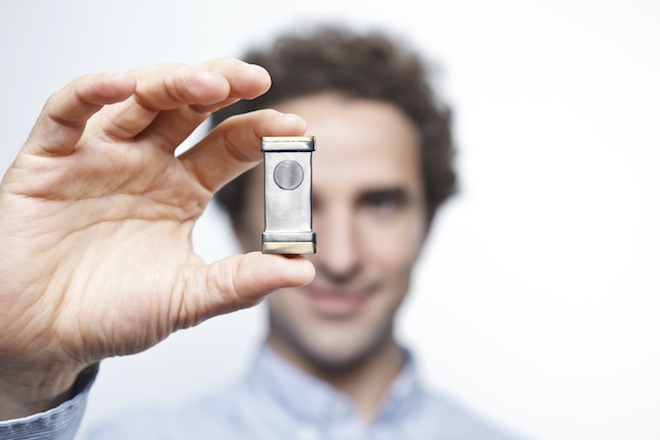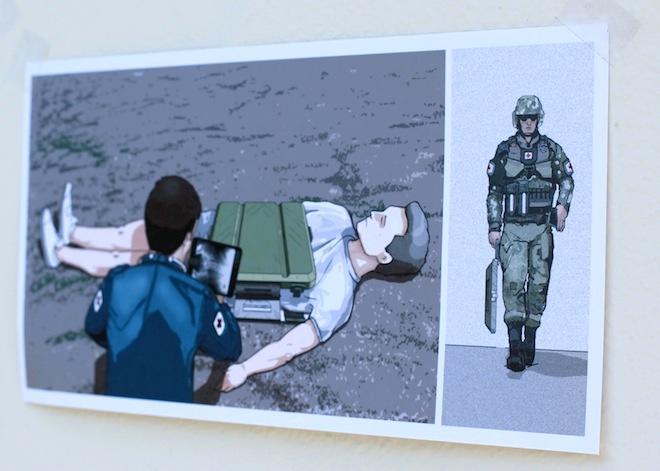
Tribogenics chief scientist Carlos Camara holding the tiny X-ray emitter he aided style Photo: Tribogenics
Portable X-ray machines have been about for almost 100 years, but they are only portable in the sense that they can be budged at all. Most are heavy, large, and demand as a lot power as an electric-fired property water heater to use.
The mission of Tribogenics, a Southern California-based startup, is to to replace all individuals clunky machines with devices no larger than a great-sized laptop. The business plans to get there utilizing a tiny X-ray generator the length of a stick of gum, that could power small, battery-powered X-ray machines. If profitable, the lightweight imaging machines could simply be transported to the front lines of combat, to disaster locations, or basically to remote locales far from hospitals – all without needing to transport the patient. To assist move from science experiment to product, Tribogenics has raised $ 6.two million from Peter Thiel’s Founders Fund.
 Under a DARPA-funded initiative, Tribogenics developed a tiny X-ray emitter using “a breakthrough new metal-polymer technology.” Given that the technology is still pre-production, the business won’t go into precise detail on what that implies, but chief scientist Carlos Camara says Tribogenics is “completely reinventing the X-ray device.”
Under a DARPA-funded initiative, Tribogenics developed a tiny X-ray emitter using “a breakthrough new metal-polymer technology.” Given that the technology is still pre-production, the business won’t go into precise detail on what that implies, but chief scientist Carlos Camara says Tribogenics is “completely reinventing the X-ray device.”
Reinventing the X-ray emitter, in Tribogenics’ case, implies producing it tiny and supremely energy-effective. The organization’s name, Tribogenics, is a nod to the variety of power its X-ray emitters leverage to create electricity, known as tribocharging. You know it as static electrical power – an electrical charge produced by friction. Tribogenics’s emitters use the identical concept to produce power themselves, and hence call for only minimal outside power to keep a portable X-ray machine going.

A mockup of a portable X-ray machine based on Tribogenic’s emitters. Photo: Tribogenics
Genuinely portable X-ray machines are nevertheless years away, but Tribogenics is betting they’ll uncover wide application. To give you an thought, one particular mockup on Tribogenics’ website (shown right) shows a portable X-ray machine the size of a laptop or computer monitor scanning a man’s chest even though he lies in a field. The X-ray machine is hooked up to a pc, which shows the X-ray just after its captured.
Whilst the ultimate objective is an X-ray machine that can be carried anywhere, for now the business is focused on emitters of X-ray fluorescence, secondary X-rays utilized to detect and analyze chemical substances, heavy metals and other compounds. “X-rays have crucial applications from components evaluation to medicine,” says Founders Fund partner Bruce Gibney who led Tribogenic’s round. “But in spite of their enormous utility, there hasn’t been a key revolution in the production of X-rays in a century.”








